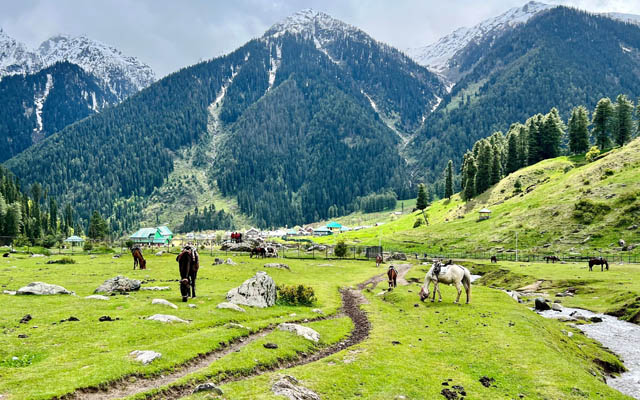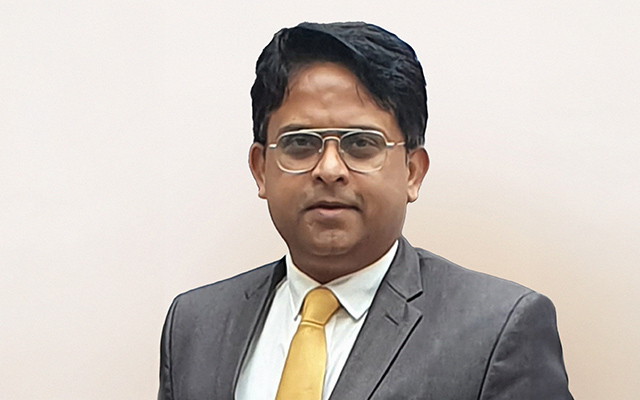Kashmir’s hospitality sector, hit hard by the April Pahalgam attack, is gradually recovering as stakeholders work to rebuild traveller confidence
Kashmir witnessed one of its deadliest terror attacks earlier this year on April 22, when gunmen opened fire near the Baisaran meadow, popularly known as ‘Mini-Switzerland’, close to Pahalgam. Dozens of tourists, mostly domestic with the exception of one foreign visitor, lost their lives in the assault. In the immediate aftermath, tourism and hospitality in the valley came to a near standstill. However, the industry remains optimistic and expects a strong revival in the coming months.
“Tourist arrivals dipped immediately after the incident but from July onward the situation has normalised. The situation in the valley is peaceful at present. With strong demand expected from October to December, the industry is hopeful that by year-end, tourist numbers will match those of 2024,” said Nasir Shah, managing director, Culture & Nature Expeditions Tours & Travels.

Tourism in Kashmir has been growing in recent years. According to statistics from the Department of Tourism, Union Territory of Jammu and Kashmir, around 2.71 million tourists visited Kashmir in 2023, compared with approximately 2.67 million in 2022.
“The valley has completely recovered from the impact of the Pahalgam terror attack. Current tourist footfall in Kashmir is low but this is due to the off-season rather than the incident itself. With the onset of the festive season in the country beginning with Durga Puja and Dussehra later this year, tourist arrivals are expected to pick up significantly,” said Sameer Baktoo, chairman of Travel Agents Association of India’s (TAAI’s) J&K Chapter.
However, Abhishek Bhattacharya, head of sales at WelcomHeritage, said that following the Pahalgam incident, the tourism sector in Kashmir continues to face challenges.
“We have observed that while there is a lot of hope, the leisure business has not yet picked up and demand remains well below what we saw prior to the incident. We are hopeful for a gradual improvement as we move towards the autumn season but the industry’s full recovery will depend on rebuilding the confidence of travellers in a sustained way,” he added. The hospitality company operates two properties in Kashmir which includes WelcomHeritage Grand and WelcomHeritage Gurkha Houseboats.
Industry associations and stakeholders across the country have been supporting their counterparts in the region to help revive the sector. In July 2025, the Confederation of Indian Industry’s Northern Regional Committee on Tourism and Hospitality held a meeting in Srinagar to discuss measures to strengthen tourism in the valley. The Travel Agents Association of India’s Rally for the Valley in Kashmir brought together travel agents from across India in support of the region’s tourism sector.
“Both the government of India and the local administration have been proactive in supporting tourism revival. Chief minister Omar Abdullah has undertaken multiple visits to promote the destination. The Indian government has also extended its support during the crisis. Indians from across the country also stood with Kashmir, continuing to travel to the valley after the Pahalgam incident and the brief India–Pakistan military stand-off,” added Baktoo.

Improved road, rail and air infrastructure has increased tourism in Kashmir in recent years. Srinagar’s airport is connected to major Indian cities including Delhi, Mumbai, Kolkata and Ahmedabad through direct flights, though demand remains mainly domestic.
“The international market for Kashmir remains limited compared to the domestic one. These tourists are largely from European countries such as Germany and Spain as well as from South-east Asia,” said Shah. Kashmir recorded 37,678 international tourist arrivals in 2023.
“Kashmir has golf courses which can be developed to promote it as a global golf destination. Golfers apart from staying in hotels also explore the destination where they are playing. So, regular international level golf tournaments are required to be organised in Kashmir,” said Rajan Sehgal, president, India Golf Tourism Association (IGTA). The local government has said it plans to develop areas such as Gulmarg as a golf destination.
However, Kashmir, affected by decades of insurgency, has seen many foreign missions in India issue travel advisories against visiting the region. According to industry stakeholders, these advisories have been a major obstacle to increasing inbound tourist numbers.
“Kashmir should be positioned as a safe destination on par with any other. If foreign advisories are withdrawn, international tourist arrivals could increase substantially,” added Baktoo.
Meanwhile, some industry players are taking steps to revive demand following the Pahalgam terrorist attack.
“We have taken proactive steps to restore confidence, from offering flexible booking policies to curating special staycation packages for couples and families. We are also amplifying real-time updates and guest content on social media to showcase the current reality on the ground, which is that Kashmir’s hospitality community is open and ready to welcome guests again,” concluded Bhattacharya.











